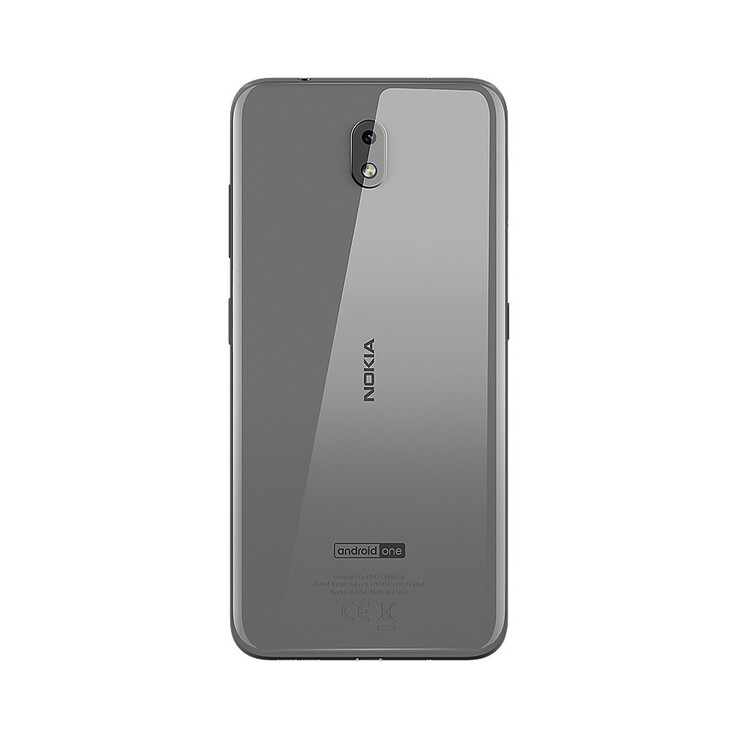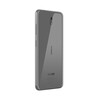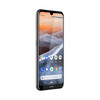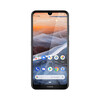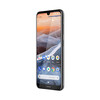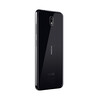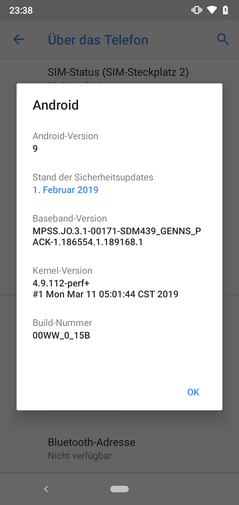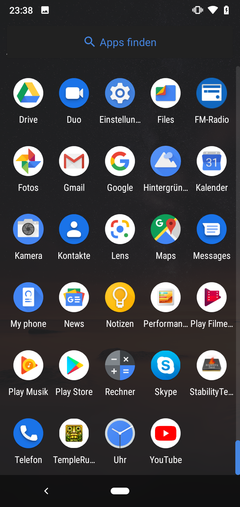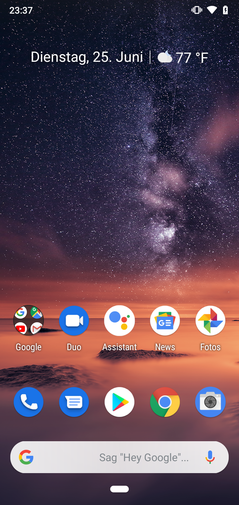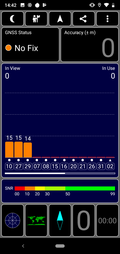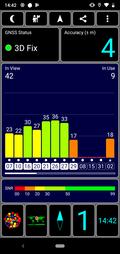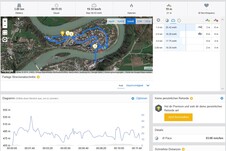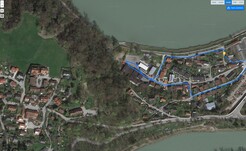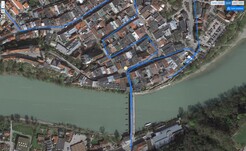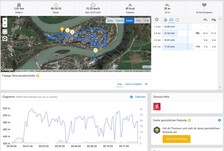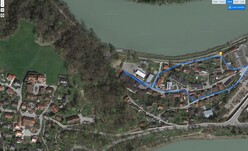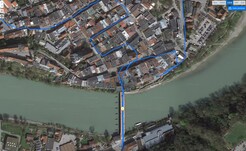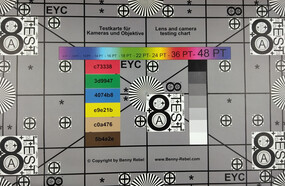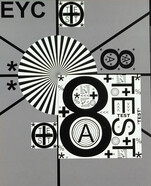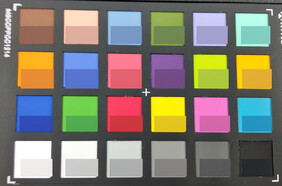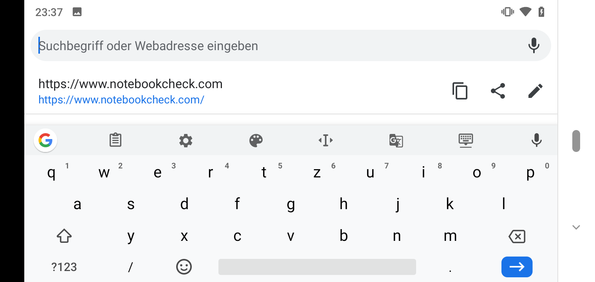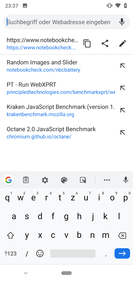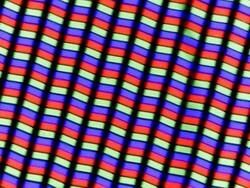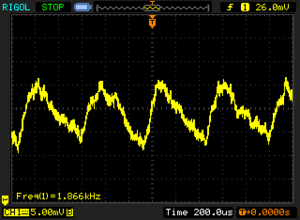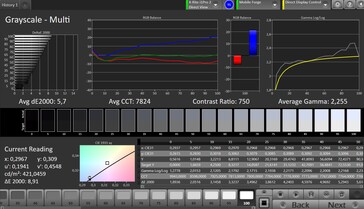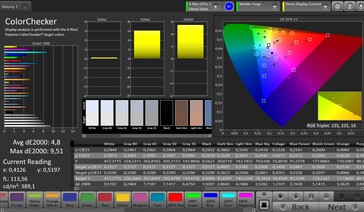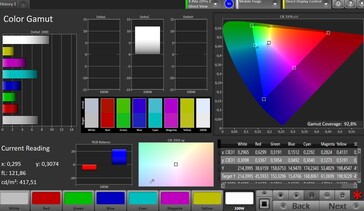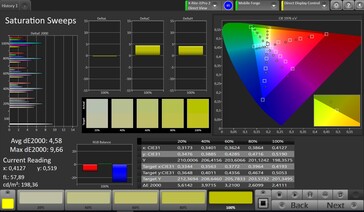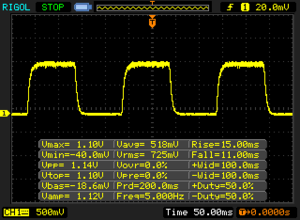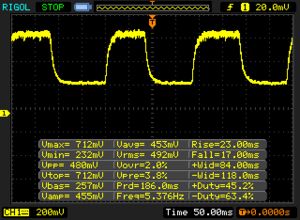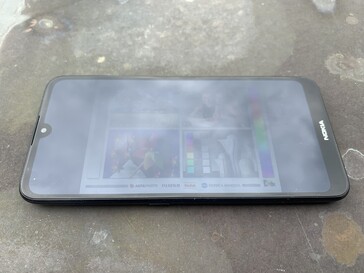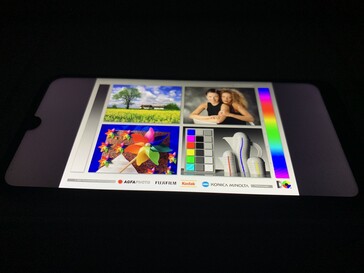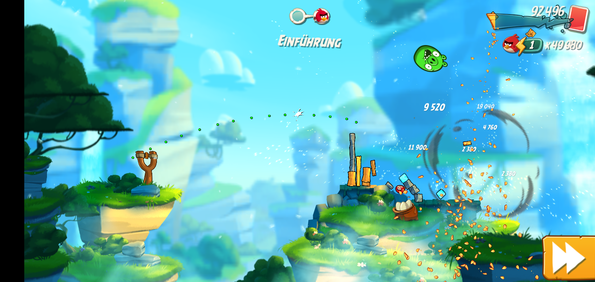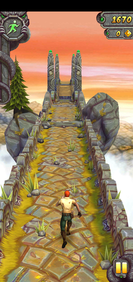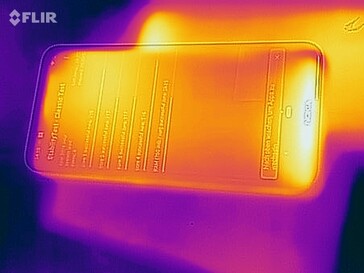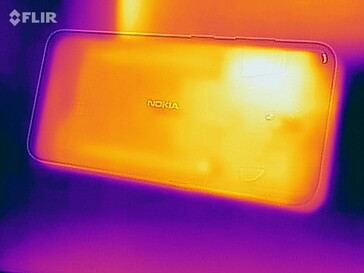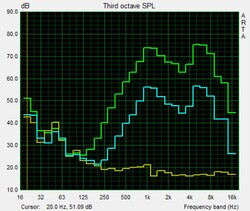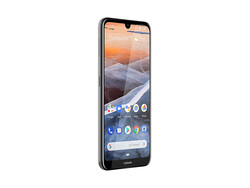Nokia 3.2 Smartphone Review: An Android One smartphone without Android One
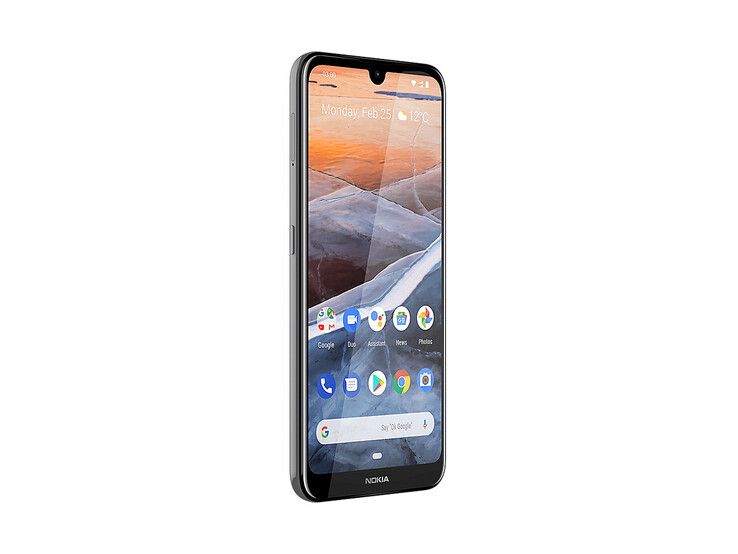
The Nokia 3 series has graced our offices before. First, we tested the eponymous Nokia 3, then the Nokia 3.1 and finally the Nokia 3.1 Plus. The latter showed that HMD Global had decided to take the series in a different direction, bringing large display phones to what had initially been a small phone series.
Now we have the Nokia 3.2, which is even larger than the Nokia 3.1 Plus. HMD Global has not released a Plus version this time, but perhaps it saw no reason to with the Nokia 3.2 already having a 6.26-inch display. The device starts at 149 Euros (~US$170) for the 16 GB version, rising by 10 Euros (~US$11) for the 32 GB model. This makes the Nokia 3.2 slightly cheaper than its direct predecessors, although you can pick up the Nokia 3.1 and Nokia 3.1 Plus for closer to 120 Euros (~US$137) and 130 Euros (~US$148), respectively.
We will compare the Nokia 3.2 against other comparably priced budget handsets, including its predecessors. Our comparison devices will include the Honor 8A, Huawei Y6 (2019) and Xiaomi Redmi 7.
Case
The Nokia 3.2 is much wider and longer than its predecessor. It is not much thicker though, but it is over 40 g heavier. Incidentally, the Nokia 3.2 is heavier than all our comparison devices too.
HMD Global currently sells the Nokia 3.2 in grey or black, both of which have plastic back cases. Its design is much simpler than the Nokia 3.1 too, which came in more daring colours and with a colour-accented frame. By contrast, the Nokia 3.2 has a much higher screen-to-body ratio thanks to its waterdrop notch, giving it a more contemporary look than its predecessor.
Overall, the Nokia 3.2 looks cheaper than the Nokia 3.1 Plus too, which is compounded by the omission of a fingerprint sensor and the single rear-facing camera. The former’s 500-mAh larger battery brings the two to within 1 g of each other though.
The Nokia 3.2 is surprisingly well-made despite the materials from which it is made. While we can temporarily deform the display by applying pressure to it, the back case does not twist or bend regardless of how hard we try to do so. A last point on the plastic back: Its shiny finish is a fingerprint magnet.
Connectivity
HMD Global currently sells the Nokia 3.2 in three variants. The cheaper of the two available here costs 159 Euros (~US$181) and comes with 32 GB of flash storage. There is also a 16 GB version that costs 10 Euros (~US$11) less. Both come with 2 GB of RAM. HMD Global sells a 3 GB of RAM version with 32 GB of storage and a fingerprint scanner too, but this is not available in Central Europe at the time of writing.
All variants have two nano-SIM slots and a dedicated microSD slot, meaning that you need not choose between dual-SIM functionality and microSD card expansion. Incidentally, the Nokia 3.2 supports the ExFAT file system, allowing it to read files larger than 4 GB.
The Nokia 3.2 supports Bluetooth 4.2 too, although it would have been nice to see Bluetooth 5.0 instead. The inclusion of an FM radio transmitter and a notification LED is useful at least.
Sadly, HMD Global has opted for a micro USB port rather than the reversible and more future-proofed USB Type-C. Worse still, the port does not hold cables tightly, so we occasionally found ourselves having to reconnect the charging cable during our tests.
Software
The Nokia 3.2 is an Android One-certified smartphone, meaning that Google rather than HMD Global supplies it with system and security updates. The former guarantees that it will roll out two major system updates and three years of security patch updates.
This is impressive stuff, especially considering that the Nokia 3.2 ships with Android 9 Pie. Hence, the device should receive Android 11, or whatever Google eventually calls it. Inexplicably, the company had only pushed February 1, 2019, security patches to our review unit when we tested it earlier this month, making them over four months outdated.
The OS contains no bloatware besides the usual set of Google apps, which is rare among budget smartphones. Oddly, HMD Global claims that it has optimised the display for streaming but has not certified it for streaming content in HD. Correspondingly, you can only stream DRM-protected content from services like Amazon Prime Video and Netflix in standard definition (SD).
Communication & GPS
The Nokia 3.2 supports all modern Wi-Fi standards up to IEEE 802.11n. Our review unit averaged just 44.7 Mb/s in our iperf3 Client Wi-Fi tests with our Linksys EA8500 router though, putting it at the bottom of our comparison table. Overall, it finished on par with the Nokia 3.1 Plus and a way off the Nokia 3.1.
HMD Global has included the bare minimum LTE coverage for using the Nokia 3.2 in Europe. Correspondingly, you may find it difficult to connect to an LTE network outside that region, so the Nokia 3.2 may not be for you if you regularly make intercontinental trips.
The device supports LTE Cat.4 for up to 150 Mb/s download and 50 Mb/s upload speeds. Our review unit maintained decent network reception on the German D2 network during our tests in built-up areas.
| Networking | |
| iperf3 transmit AX12 | |
| Nokia 3.1 | |
| Xiaomi Redmi 7 | |
| Nokia 3.2 | |
| Nokia 3.1 Plus | |
| Huawei Y6 2019 | |
| Honor 8A | |
| iperf3 receive AX12 | |
| Nokia 3.1 | |
| Huawei Y6 2019 | |
| Honor 8A | |
| Nokia 3.1 Plus | |
| Xiaomi Redmi 7 | |
| Nokia 3.2 | |
The Nokia 3.2 can locate us with up to four metres accuracy outside, which is impressive for a device at this price. It cannot do so indoors though.
We also took our review unit on a bike ride to compare its location accuracy against our Garmin Edge 520 reference bike computer. The Nokia 3.2 deviated by 190 m over the 3.8 km route that the Garmin recorded, which represents a 95% accuracy. The smartphone did occasionally cut corners to keep up with us, but it did not make any huge errors. Overall, the Nokia 3.2 is accurate enough for general navigation tasks and has a surprisingly good GPS module considering its price.
Telephone Features & Call Quality
The Nokia 3.2 uses the standard suite of Google telephony apps for handling calls and messages. The apps are clearly laid out and intuitive to use, in our opinion.
Our review unit has decent call quality using its earpiece or speaker. Calls sound loud without being distorted, and our call partner always remained intelligible. The built-in microphone picked our voice out well too.
Cameras
The cameras in the Nokia 3.2 are a bit of a let-down. The device has a 5 MP front-facing sensor, which is 3 MP small than the corresponding sensor in the Nokia 3.1 and Nokia 3.1 Plus. Likewise, while it shares its 13 MP rear-facing sensor with its predecessors, HMD Global has omitted the secondary sensor that is in the Nokia 3.1 Plus. Confused? So are we.
The 13 MP rear-facing sensor in our review unit takes underexposed and noisy photos in low light, but we expected as much from a smartphone at this price. Photos shot in cloudy environments look overly dark too, with clouds and dark areas of the scene dominating the resulting photo. Photos taken in good lighting look pleasing though, with the flowers in scene 1 contrasting well against the leaves and large brown areas of the photo.
Video recordings also look mediocre and suffer from the same issues that photos do. The 13 MP sensor also graduates exposure levels in changing light conditions. It does so comparatively quickly, but the changes are noticeable
The 5 MP front-facing sensor has its deficiencies too. Our test photos look overly warm for some reason. They are comparatively detailed though.
The rear-facing sensor cannot convince us under controlled lighting conditions either. The camera oversaturates most colours compared to the ColorChecker Passport reference colours, while it struggles to reproduce dark fonts against coloured backgrounds. Our test chart looks rather dark too, although this does help mask any contrast inconsistencies.
Accessories & Warranty
The Nokia 3.2 comes with a 10 W fast charger, the charging speed of which we shall cover in the Power Management section of this review. The device also comes with a matching USB cable and a SIM tool.
The Nokia 3.2 has a 24-month limited manufacturer’s warranty too. Please see our Guarantees, Return Policies & Warranties FAQ more country-specific information.
Input Devices & Operation
The touchscreen in our review unit is accurate even into the corners of the display, while the glass has a pleasantly resistive finish. You should have no issues with performing swiping or multi-finger gestures.
The Nokia 3.2 comes with Google GBoard preinstalled as its default keyboard. The keyboard worked just as well as it has in other devices that we have tested. Google GBoard has numerous customisation and language options, but you can install another keyboard app like those downloadable from the Google Play Store.
HMD Global may advertise the Nokia 3.2 as having a fingerprint sensor, but that is not always the case. The European variant lacks one, with the only biometric identification being the 2D facial recognition. The device uses its front-facing camera to recognise your registered face, which is not as accurate as a fingerprint would be. Moreover, you must first press the power button before the device authenticates your face, making it less practical than a fingerprint sensor would have been too. The detection is relatively accurate, but keep in mind that similar-looking people could unlock your device. They could also just use a picture of you too.
The power button also serves as a notification LED, which is novel. HMD Global has included a dedicated Google Assistant button as well.
Display
The Nokia 3.2 has a 6.26-inch IPS display that has over an 80% screen-to-body ratio thanks to its waterdrop notch. The panel operates natively at 1520x720 in a 19:9 aspect ratio, a resolution that puts it on par with our comparison devices.
Unfortunately, our review unit has a comparatively dim display, with X-Rite i1Pro 2 recording its average maximum brightness at just 391 cd/m². The displays in our comparison devices get from 13% to 39% brighter, by contrast. The display in the Nokia 3.2 is also just 86% evenly lit, which is markedly worse than our comparison devices.
We should also point out that our test device suffers from a brightness control issue. Initially, everything worked fine. Inexplicably, the brightness stopped changing and got stuck at a certain level. The problem kept cropping up throughout our tests before disappearing again. Restarting the device did not rectify things, nor did switching auto-brightness off and on. We do not know whether this is a localised issue or something more widespread, either.
| |||||||||||||||||||||||||
Brightness Distribution: 86 %
Center on Battery: 415 cd/m²
Contrast: 755:1 (Black: 0.55 cd/m²)
ΔE ColorChecker Calman: 4.8 | ∀{0.5-29.43 Ø4.78}
ΔE Greyscale Calman: 5.7 | ∀{0.09-98 Ø5}
92.8% sRGB (Calman 2D)
Gamma: 2.255
CCT: 7824 K
| Nokia 3.2 IPS, 1520x720, 6.3" | Nokia 3.1 IPS, 1440x720, 5.2" | Honor 8A IPS, 1520x720, 6.1" | Huawei Y6 2019 IPS LCD, 1560x720, 6.1" | Xiaomi Redmi 7 IPS, 1520x720, 6.3" | Nokia 3.1 Plus IPS, 1440x720, 6" | |
|---|---|---|---|---|---|---|
| Screen | 26% | 17% | 25% | 17% | 49% | |
| Brightness middle (cd/m²) | 415 | 506 22% | 522 26% | 487 17% | 444 7% | 526 27% |
| Brightness (cd/m²) | 391 | 490 25% | 542 39% | 485 24% | 441 13% | 510 30% |
| Brightness Distribution (%) | 86 | 93 8% | 94 9% | 89 3% | 90 5% | 94 9% |
| Black Level * (cd/m²) | 0.55 | 0.24 56% | 0.47 15% | 0.35 36% | 0.45 18% | 0.17 69% |
| Contrast (:1) | 755 | 2108 179% | 1111 47% | 1391 84% | 987 31% | 3094 310% |
| Colorchecker dE 2000 * | 4.8 | 6.4 -33% | 4 17% | 4.3 10% | 3.94 18% | 6.64 -38% |
| Colorchecker dE 2000 max. * | 9.51 | 11.1 -17% | 9.5 -0% | 10.1 -6% | 6.72 29% | 10.02 -5% |
| Greyscale dE 2000 * | 5.7 | 7.5 -32% | 6.6 -16% | 4.1 28% | 4.8 16% | 6.4 -12% |
| Gamma | 2.255 98% | 2.2 100% | 2.28 96% | 2.09 105% | 2.294 96% | 2.344 94% |
| CCT | 7824 83% | 8643 75% | 7258 90% | 7312 89% | 7445 87% | 7989 81% |
* ... smaller is better
Screen Flickering / PWM (Pulse-Width Modulation)
| Screen flickering / PWM detected | 1866 Hz | ≤ 10 % brightness setting | |
The display backlight flickers at 1866 Hz (worst case, e.g., utilizing PWM) Flickering detected at a brightness setting of 10 % and below. There should be no flickering or PWM above this brightness setting. The frequency of 1866 Hz is quite high, so most users sensitive to PWM should not notice any flickering. In comparison: 53 % of all tested devices do not use PWM to dim the display. If PWM was detected, an average of 8108 (minimum: 5 - maximum: 343500) Hz was measured. | |||
Disappointingly, the display uses pulse-width modulation (PWM) to regulate brightness. PWM can cause health issues like eye strain and headaches, although the flicker of the Nokia 3.2’s display should affect only a limited number of people. We recorded the panel flickering at 1,866 Hz at 10% brightness and below, which should be beyond most people’s perceivable range.
Our review unit also has a comparatively high black value, which we measure at 0.55 cd/m². This gives dark areas a grey tint and limits the contrast ratio to 755:1. Subjectively, colours look duller than they do on the displays of our comparison devices.
Worse still, the display suffers from a blue tint. DeltaE colour deviations are a bit high too, even if they are on par with our comparison devices. In short, the Nokia 3.2 has a distinctly colour-inaccurate display.
Display Response Times
| ↔ Response Time Black to White | ||
|---|---|---|
| 26 ms ... rise ↗ and fall ↘ combined | ↗ 15 ms rise | |
| ↘ 11 ms fall | ||
| The screen shows relatively slow response rates in our tests and may be too slow for gamers. In comparison, all tested devices range from 0.1 (minimum) to 240 (maximum) ms. » 61 % of all devices are better. This means that the measured response time is worse than the average of all tested devices (20.2 ms). | ||
| ↔ Response Time 50% Grey to 80% Grey | ||
| 40 ms ... rise ↗ and fall ↘ combined | ↗ 23 ms rise | |
| ↘ 17 ms fall | ||
| The screen shows slow response rates in our tests and will be unsatisfactory for gamers. In comparison, all tested devices range from 0.165 (minimum) to 636 (maximum) ms. » 60 % of all devices are better. This means that the measured response time is worse than the average of all tested devices (31.6 ms). | ||
All these deficiencies combine to make the Nokia 3.2 difficult to read outside on sunny days. Our photo below demonstrates this, but you should have no readability issues on most days. The panel has stable viewing angles though and gives no cause for concern.
Performance
The Nokia 3.2 is the first Qualcomm Snapdragon 429-powered smartphone to grace our offices. The SoC integrates a quad-core processor and a Qualcomm Adreno 504 GPU. It hardly stands out from the SoCs in its two predecessors though and generally scores marginally less than the MediaTek MT6750N in the Nokia 3.1. The gap is larger between the Snapdragon 429 and the MediaTek Helio P22 MT6762 powering the Nokia 3.1 Plus, with the latter scoring 20% more in AnTuTu v7. Overall, the Nokia 3.2 finishes towards the bottom of our comparison tables and has below-average performance for a device at this price. We noticed slowdowns and lags during heavy multitasking too.
Things look even worse in synthetic 3D benchmarks, with the Adreno 504 consistently scoring a few frames less than comparable GPUs. The ARM Mali-T860 MP2 and PowerVR GE8320 have more grunt, and that is not saying much.
| PCMark for Android | |
| Work performance score (sort by value) | |
| Nokia 3.2 | |
| Nokia 3.1 | |
| Honor 8A | |
| Huawei Y6 2019 | |
| Xiaomi Redmi 7 | |
| Nokia 3.1 Plus | |
| Average Qualcomm Snapdragon 429 (5986 - 6227, n=2) | |
| Work 2.0 performance score (sort by value) | |
| Nokia 3.2 | |
| Nokia 3.1 | |
| Honor 8A | |
| Huawei Y6 2019 | |
| Xiaomi Redmi 7 | |
| Nokia 3.1 Plus | |
| Average Qualcomm Snapdragon 429 (4267 - 4631, n=2) | |
| GFXBench 3.0 | |
| on screen Manhattan Onscreen OGL (sort by value) | |
| Nokia 3.2 | |
| Nokia 3.1 | |
| Honor 8A | |
| Huawei Y6 2019 | |
| Xiaomi Redmi 7 | |
| Nokia 3.1 Plus | |
| Average Qualcomm Snapdragon 429 (8.9 - 9.5, n=2) | |
| Average of class Smartphone (18 - 166, n=159, last 2 years) | |
| 1920x1080 1080p Manhattan Offscreen (sort by value) | |
| Nokia 3.2 | |
| Nokia 3.1 | |
| Honor 8A | |
| Huawei Y6 2019 | |
| Xiaomi Redmi 7 | |
| Nokia 3.1 Plus | |
| Average Qualcomm Snapdragon 429 (4.7 - 4.8, n=2) | |
| Average of class Smartphone (12 - 606, n=158, last 2 years) | |
| GFXBench 3.1 | |
| on screen Manhattan ES 3.1 Onscreen (sort by value) | |
| Nokia 3.2 | |
| Nokia 3.1 | |
| Honor 8A | |
| Huawei Y6 2019 | |
| Xiaomi Redmi 7 | |
| Nokia 3.1 Plus | |
| Average Qualcomm Snapdragon 429 (6.7 - 6.9, n=2) | |
| Average of class Smartphone (11 - 166, n=159, last 2 years) | |
| 1920x1080 Manhattan ES 3.1 Offscreen (sort by value) | |
| Nokia 3.2 | |
| Nokia 3.1 | |
| Honor 8A | |
| Huawei Y6 2019 | |
| Xiaomi Redmi 7 | |
| Nokia 3.1 Plus | |
| Average Qualcomm Snapdragon 429 (3.1 - 3.2, n=2) | |
| Average of class Smartphone (8.4 - 413, n=158, last 2 years) | |
| AnTuTu v7 - Total Score (sort by value) | |
| Nokia 3.2 | |
| Honor 8A | |
| Huawei Y6 2019 | |
| Xiaomi Redmi 7 | |
| Nokia 3.1 Plus | |
| Average Qualcomm Snapdragon 429 (n=1) | |
Moreover, the Nokia 3.2 falls short of the Nokia 3.1 Plus in browser benchmarks, as it does with the Nokia 3.1 too. In daily use, we found ourselves waiting for media content to appear. Websites load quickly, but the fluidity of scrolling animations is rather mediocre and can become choppy.
| Jetstream 2 - 2.0 Total Score | |
| Average of class Smartphone (23.8 - 387, n=153, last 2 years) | |
| Xiaomi Redmi 7 (Chrome 73) | |
| Huawei Y6 2019 | |
| Average Qualcomm Snapdragon 429 (14.6 - 16.1, n=2) | |
| Nokia 3.2 (Chrome 75) | |
| Honor 8A | |
| Speedometer 2.0 - Result 2.0 | |
| Average of class Smartphone (15.2 - 643, n=126, last 2 years) | |
| Xiaomi Redmi 7 (Chome 73) | |
| Huawei Y6 2019 (Chrome) | |
| Nokia 3.2 (Chome 75) | |
| Honor 8A (Chrome) | |
| Average Qualcomm Snapdragon 429 (13.5 - 15.6, n=2) | |
| WebXPRT 3 - Overall | |
| Average of class Smartphone (38 - 380, n=34, last 2 years) | |
| Xiaomi Redmi 7 (Chrome 73) | |
| Nokia 3.2 (Chrome 75) | |
| Huawei Y6 2019 | |
| Average Qualcomm Snapdragon 429 (32 - 36, n=2) | |
| Honor 8A (Chrome) | |
| Octane V2 - Total Score | |
| Average of class Smartphone (2228 - 121337, n=201, last 2 years) | |
| Xiaomi Redmi 7 (Chrome 73) | |
| Nokia 3.1 Plus (Chrome 71) | |
| Huawei Y6 2019 (Chrome) | |
| Nokia 3.2 (Chrome 75) | |
| Honor 8A (Chrome) | |
| Average Qualcomm Snapdragon 429 (4297 - 4392, n=2) | |
| Nokia 3.1 (Chrome 67) | |
| Mozilla Kraken 1.1 - Total | |
| Nokia 3.1 (Chrome 67) | |
| Honor 8A (Chrome) | |
| Nokia 3.1 Plus (Chrome 71) | |
| Average Qualcomm Snapdragon 429 (10433 - 10655, n=2) | |
| Nokia 3.2 (Chrome 75) | |
| Huawei Y6 2019 | |
| Xiaomi Redmi 7 (Chrome 73) | |
| Average of class Smartphone (257 - 28190, n=156, last 2 years) | |
* ... smaller is better
We can praise the Nokia 3.2 for the speed of its internal storage though. It generally outperforms our comparison devices, while its microSD card reader has comparatively fast transfer speeds too.
| Nokia 3.2 | Nokia 3.1 | Honor 8A | Huawei Y6 2019 | Xiaomi Redmi 7 | Nokia 3.1 Plus | Average 16 GB eMMC Flash | Average of class Smartphone | |
|---|---|---|---|---|---|---|---|---|
| AndroBench 3-5 | -16% | 7% | 13% | 12% | -16% | -44% | 1221% | |
| Sequential Read 256KB (MB/s) | 282.4 | 281.5 0% | 265 -6% | 279.3 -1% | 298 6% | 272.5 -4% | 164.5 ? -42% | 2226 ? 688% |
| Sequential Write 256KB (MB/s) | 106.3 | 35.26 -67% | 104 -2% | 107.8 1% | 84.7 -20% | 35.72 -66% | 43 ? -60% | 1848 ? 1638% |
| Random Read 4KB (MB/s) | 35 | 48.62 39% | 61 74% | 69 97% | 73.6 110% | 52.4 50% | 21.7 ? -38% | 295 ? 743% |
| Random Write 4KB (MB/s) | 17.5 | 9.2 -47% | 15 -14% | 15 -14% | 14.4 -18% | 8.33 -52% | 8.08 ? -54% | 335 ? 1814% |
| Sequential Read 256KB SDCard (MB/s) | 87.2 ? | 77.2 ? -11% | 81.9 -6% | 83.2 ? -5% | 85.9 ? -1% | 81.3 ? -7% | 59.1 ? -32% | |
| Sequential Write 256KB SDCard (MB/s) | 65.7 ? | 59.8 ? -9% | 61.8 -6% | 64.4 ? -2% | 63.3 ? -4% | 55.2 ? -16% | 39.8 ? -39% |
Games
The Adreno 504 is powerful enough to play simple or older titles like Angry Birds 2 smoothly, but you will need to look elsewhere if you want to play more complex games. The Redmi 7 is one such alternative, although some games will look rather choppy.
We experienced no issues with the touchscreen and associated sensors during our gaming tests. Fast-paced titles like Temple Run 2 worked perfectly, with the touchscreen reacting promptly to our swipes.
Emissions
Temperature
The Nokia 3.2 runs hot even when idling. Our review unit never feels cool to the touch when we are using it, with two areas exceeding 35 °C. This is unacceptably hot, as are the surface temperatures under load.
The front of the device averaged 39.1 °C when we pushed the system hard, with one area peaking at 41.3 °C. In short, the Nokia 3.2 will feel uncomfortable to hold if you are gaming.
(±) The maximum temperature on the upper side is 41.3 °C / 106 F, compared to the average of 35.2 °C / 95 F, ranging from 21.9 to 247 °C for the class Smartphone.
(+) The bottom heats up to a maximum of 39.7 °C / 103 F, compared to the average of 34 °C / 93 F
(±) In idle usage, the average temperature for the upper side is 33.2 °C / 92 F, compared to the device average of 32.9 °C / 91 F.
Speakers
The Nokia 3.2 has a mono speaker at the bottom edge of its frame. Oddly, the speaker in our review unit is about 3 dB(A) quieter than the one in the Nokia 3.1. Positively, the speaker does not distort when playing music at maximum volume, nor does it over-emphasise high-pitched frequencies. Bass tones are all but absent, but this is the case with almost all modern laptops and smartphones.
Overall, the speaker in the Nokia 3.2 is good enough for occasionally listening to music or watching YouTube videos. We would still recommend using external audio equipment where possible though, as headphones or speakers will deliver a better listening experience than the speaker can. Both Bluetooth and the headphone jack worked perfectly during our tests.
Nokia 3.2 audio analysis
(+) | speakers can play relatively loud (82.5 dB)
Bass 100 - 315 Hz
(-) | nearly no bass - on average 66.7% lower than median
(+) | bass is linear (0% delta to prev. frequency)
Mids 400 - 2000 Hz
(-) | nearly no mids - on average 66.7% lower than median
(+) | mids are linear (0% delta to prev. frequency)
Highs 2 - 16 kHz
(-) | nearly no highs - on average 66.7% lower than median
(+) | highs are linear (0% delta to prev. frequency)
Overall 100 - 16.000 Hz
(-) | overall sound is not linear (123.1% difference to median)
Compared to same class
» 92% of all tested devices in this class were better, 7% similar, 1% worse
» The best had a delta of 11%, average was 35%, worst was 134%
Compared to all devices tested
» 97% of all tested devices were better, 2% similar, 0% worse
» The best had a delta of 4%, average was 24%, worst was 134%
Nokia 3.1 audio analysis
(+) | speakers can play relatively loud (85.9 dB)
Bass 100 - 315 Hz
(-) | nearly no bass - on average 36.8% lower than median
(±) | linearity of bass is average (7.8% delta to prev. frequency)
Mids 400 - 2000 Hz
(+) | balanced mids - only 4.8% away from median
(±) | linearity of mids is average (7.2% delta to prev. frequency)
Highs 2 - 16 kHz
(±) | higher highs - on average 5.6% higher than median
(+) | highs are linear (3.7% delta to prev. frequency)
Overall 100 - 16.000 Hz
(±) | linearity of overall sound is average (26% difference to median)
Compared to same class
» 65% of all tested devices in this class were better, 6% similar, 28% worse
» The best had a delta of 11%, average was 35%, worst was 134%
Compared to all devices tested
» 79% of all tested devices were better, 4% similar, 16% worse
» The best had a delta of 4%, average was 24%, worst was 134%
Power Management
Power Consumption
The Nokia 3.2 consumes about as much power as the Nokia 3.1 Plus, which is to say that it is less efficient than most of our comparison devices. By contrast, the Huawei Y6 (2019) and Nokia 3.1 both average at least 20% lower power draws than our review unit.
| Off / Standby | |
| Idle | |
| Load |
|
Key:
min: | |
| Nokia 3.2 4000 mAh | Nokia 3.1 2990 mAh | Honor 8A 3020 mAh | Huawei Y6 2019 3020 mAh | Xiaomi Redmi 7 4000 mAh | Nokia 3.1 Plus 3500 mAh | Average Qualcomm Snapdragon 429 | Average of class Smartphone | |
|---|---|---|---|---|---|---|---|---|
| Power Consumption | 22% | 6% | 27% | 11% | -4% | 4% | -18% | |
| Idle Minimum * (Watt) | 1 | 0.68 32% | 0.73 27% | 0.59 41% | 1 -0% | 1 -0% | 0.81 ? 19% | 0.848 ? 15% |
| Idle Average * (Watt) | 1.9 | 1.33 30% | 2.07 -9% | 1.94 -2% | 1.7 11% | 2.4 -26% | 2.29 ? -21% | 1.434 ? 25% |
| Idle Maximum * (Watt) | 2.8 | 1.37 51% | 2.14 24% | 1.96 30% | 2.1 25% | 2.9 -4% | 2.75 ? 2% | 1.618 ? 42% |
| Load Average * (Watt) | 4 | 4.02 -1% | 4.3 -8% | 2.82 29% | 3.3 17% | 3.7 7% | 3.81 ? 5% | 7.01 ? -75% |
| Load Maximum * (Watt) | 5.8 | 5.89 -2% | 5.96 -3% | 3.57 38% | 5.6 3% | 5.5 5% | 4.9 ? 16% | 11.3 ? -95% |
* ... smaller is better
Battery Life
The Nokia 3.2 has a 4,000 mAh battery, which lasted 15:58 hours in our practical Wi-Fi test. We conduct this test by running a script that simulates the load required to render websites. We also adjust the display the approximately 150 cd/m². We do this for all the devices that we test. Our review unit lasts longer between charges than our comparison devices, although only by 4% compared to the Nokia 3.1 Plus despite having a 500-mAh larger battery.
Nokia includes a 10 W quick charger in the box, as we mentioned earlier. The charger recharges our review unit in under 2 hours.
| Nokia 3.2 4000 mAh | Nokia 3.1 2990 mAh | Honor 8A 3020 mAh | Huawei Y6 2019 3020 mAh | Xiaomi Redmi 7 4000 mAh | Nokia 3.1 Plus 3500 mAh | |
|---|---|---|---|---|---|---|
| Battery runtime | -41% | -14% | -24% | -12% | -4% | |
| WiFi v1.3 (h) | 16 | 9.4 -41% | 13.8 -14% | 12.2 -24% | 14.1 -12% | 15.3 -4% |
| H.264 (h) | 15.3 | 13.4 | 15 | |||
| Load (h) | 5 | 4.2 | 4.5 | |||
| Reader / Idle (h) | 24.8 |
Pros
Cons
Verdict
The Nokia 3.2 costs the same as the Nokia 3.1, but it offers a larger display and a few more features than its predecessor. While this is praiseworthy, the Nokia 3.2 does not stack up as well against the Nokia 3.1 Plus, which has better cameras than our current review unit. All variants come with fingerprint scanners too unlike the Nokia 3.2. Additionally, and much to our dismay, the latter has a darker display than its predecessors.
We like that the Nokia 3.2 has a 4,000 mAh battery as well, although it only lasted marginally longer than the 500-mAh smaller battery in the Nokia 3.1 Plus during our Wi-Fi battery life test. There are no caveats about the GPS module though, which is impressively accurate for a smartphone at this price. The dedicated Google Assistant button will probably prove useful for some people too.
Our review unit suffers from an annoying screen brightness bug though, which reoccurred throughout our tests. We were dismayed to see the Nokia 3.2 running outdated security patches despite being an Android One-certified device.
The Nokia 3.2 does a lot differently to its predecessors but simultaneously without doing much better either.
The main selling point of the Nokia 3.2 compared to its predecessors is design. The Nokia 3.2 has sharper looks than the Nokia 3.1 and Nokia 3.1 Plus, although we would recommend the latter of the three if you are not swayed by looks. The Nokia 3.1 Plus has more features than the Nokia 3.2 and almost the same performance, while costing considerably less. This does not make the Nokia 3.2 a bad smartphone, but it has done little to convince us of its merits compared to its predecessors.
Nokia 3.2
- 06/25/2019 v6 (old)
Florian Schmitt




